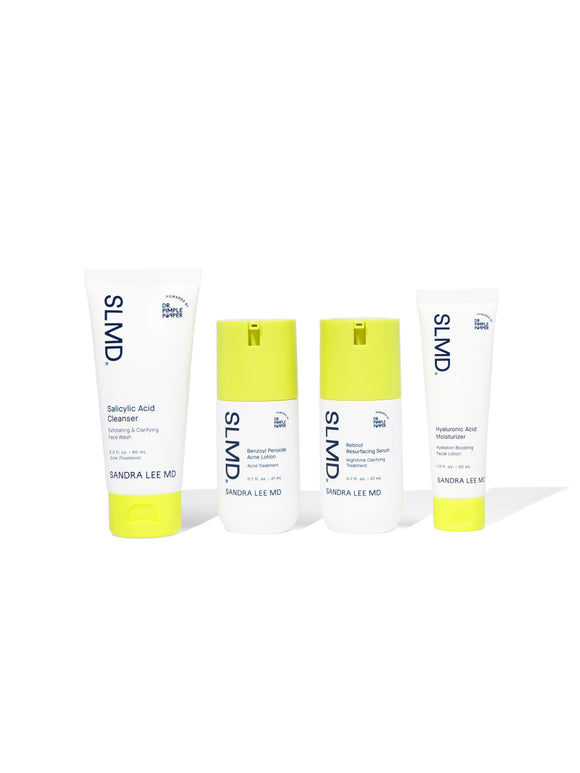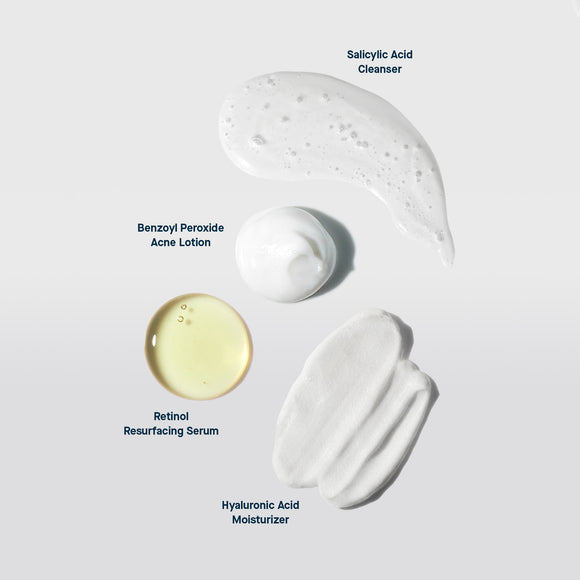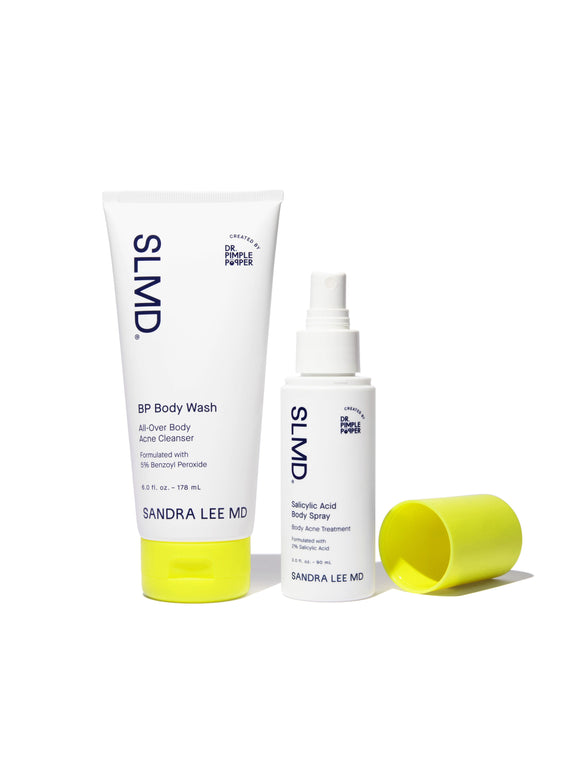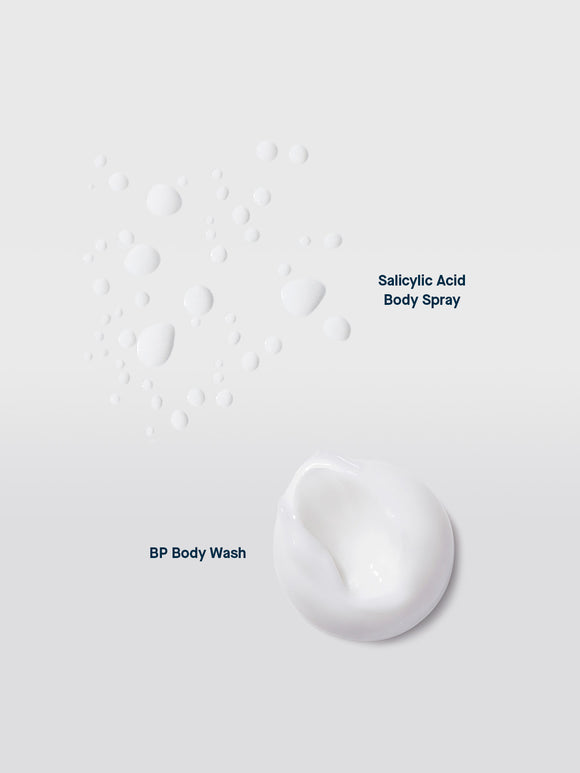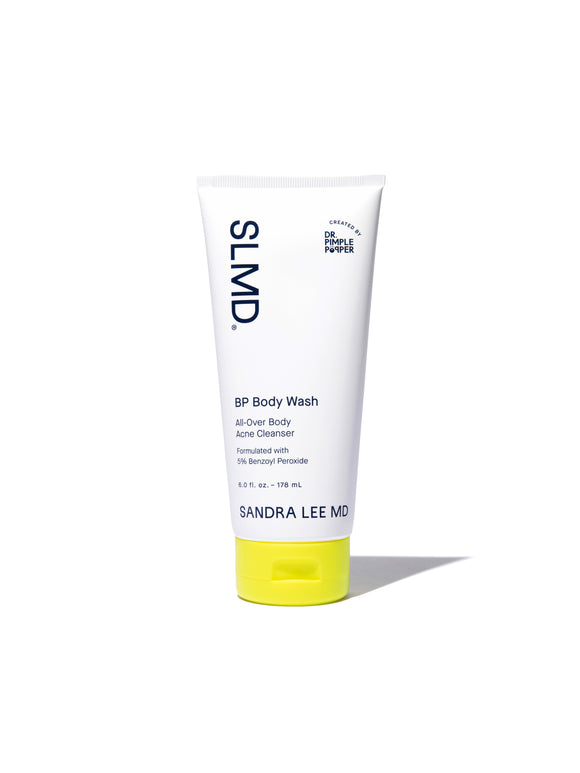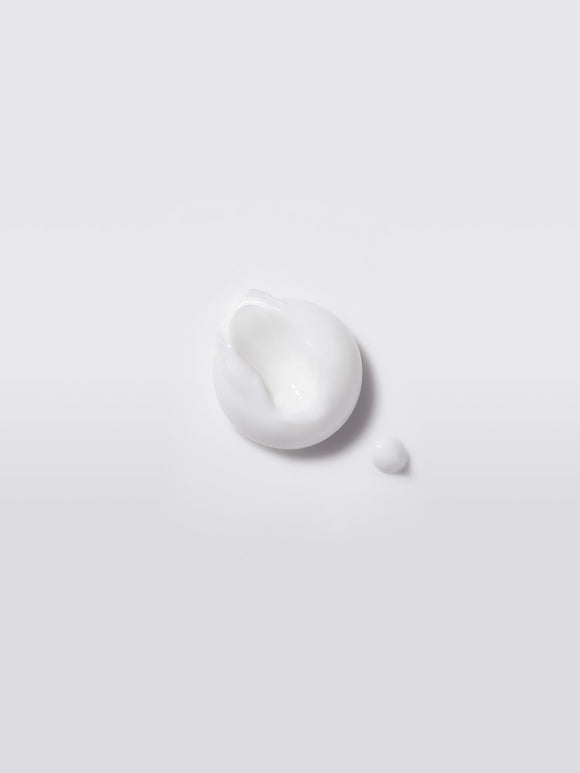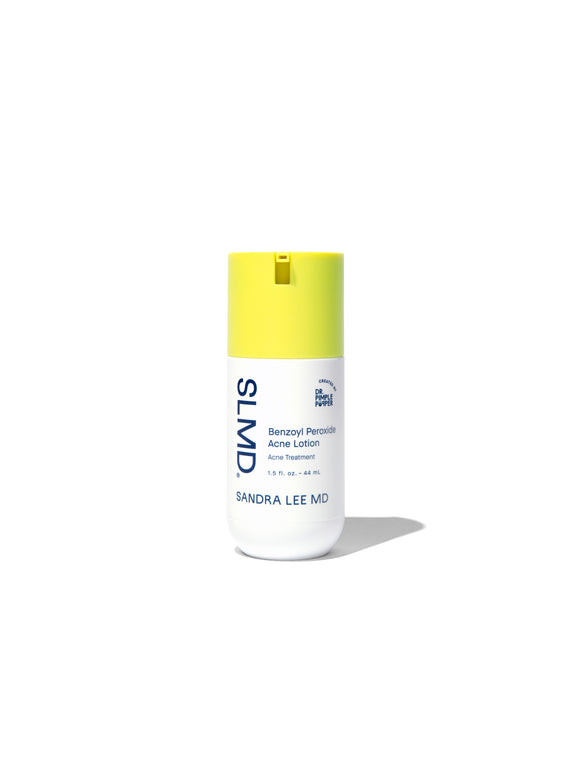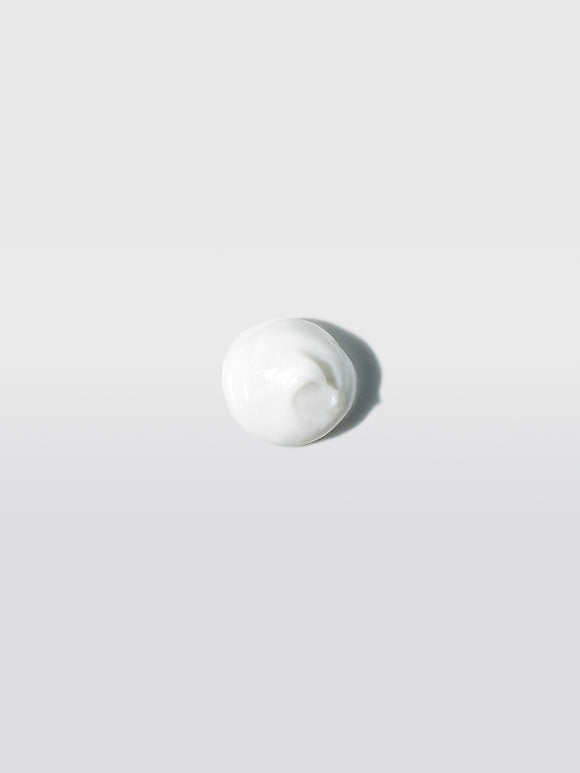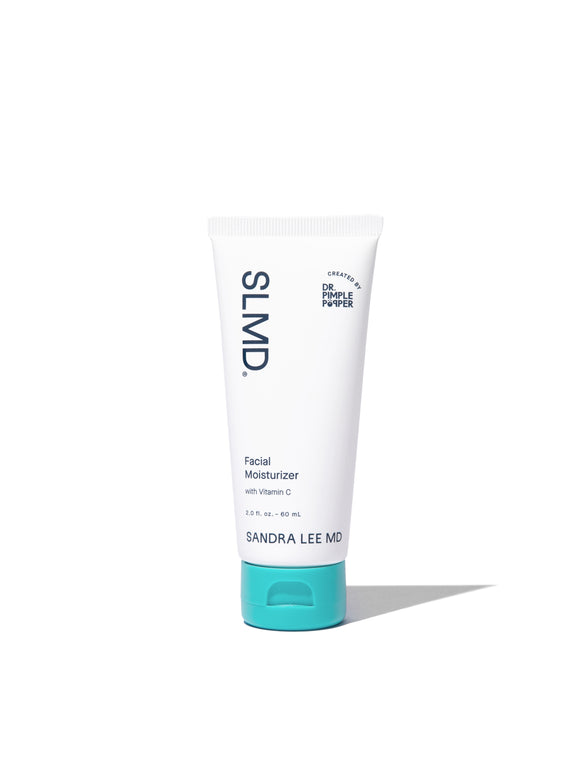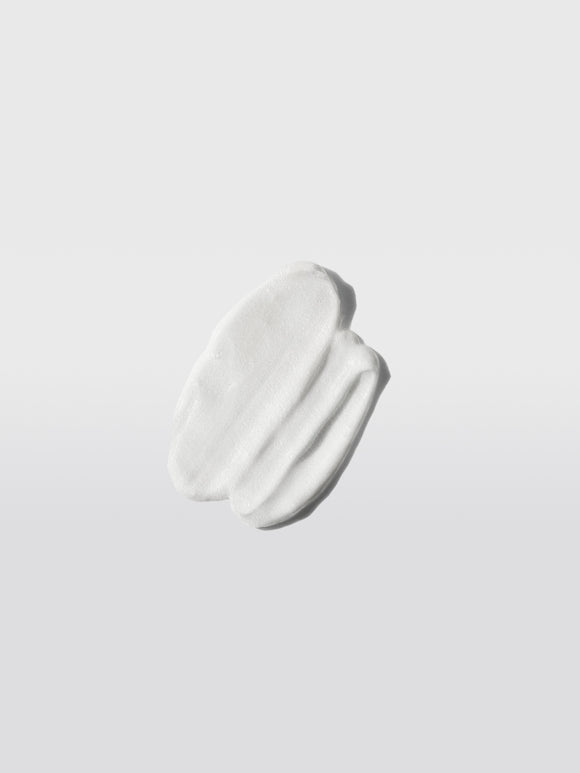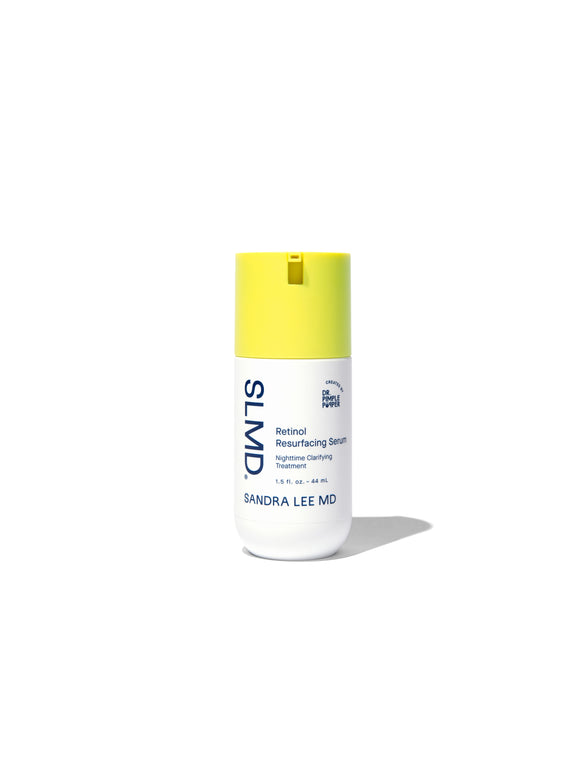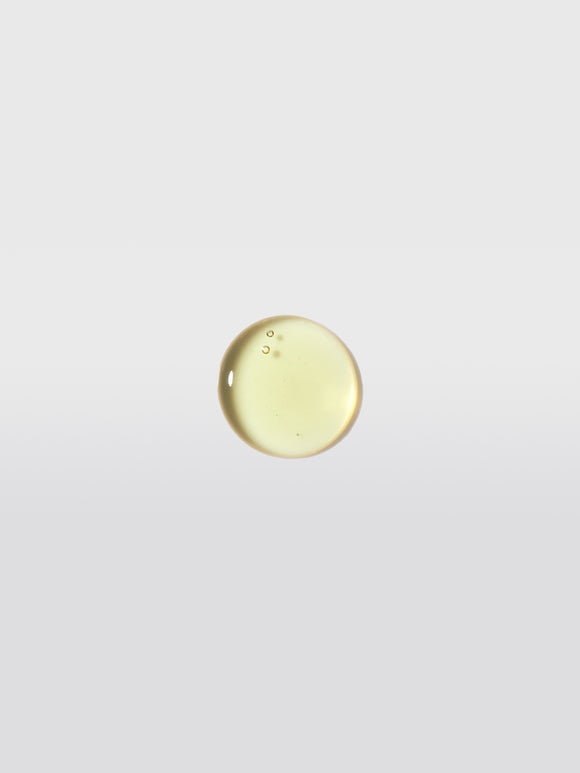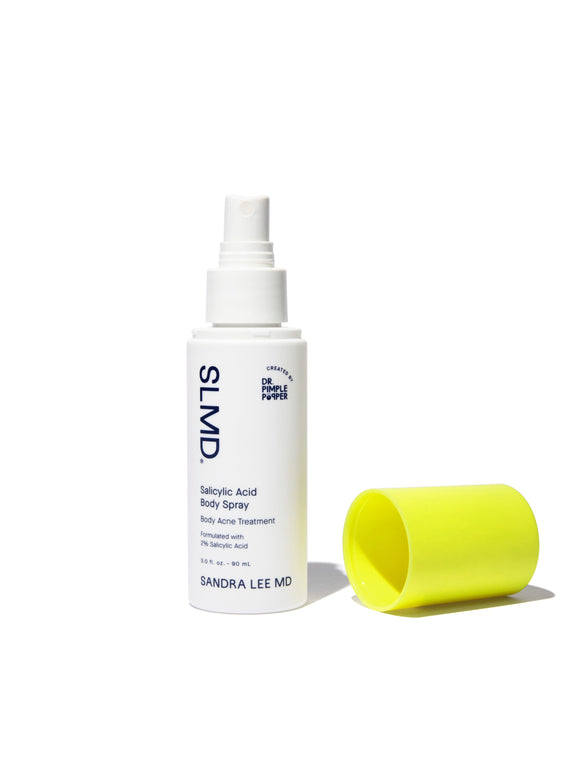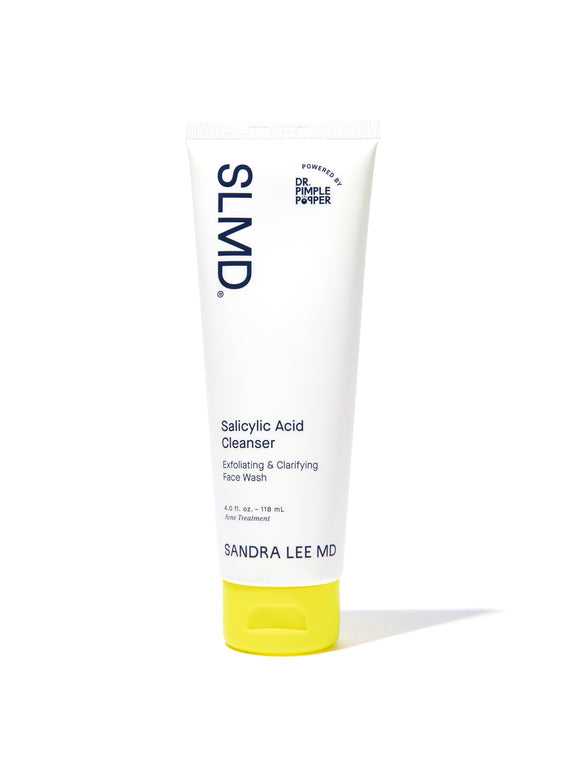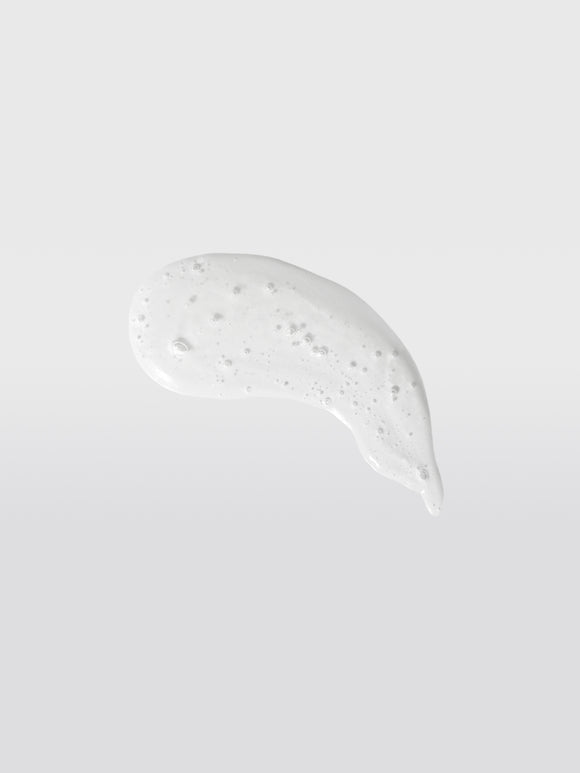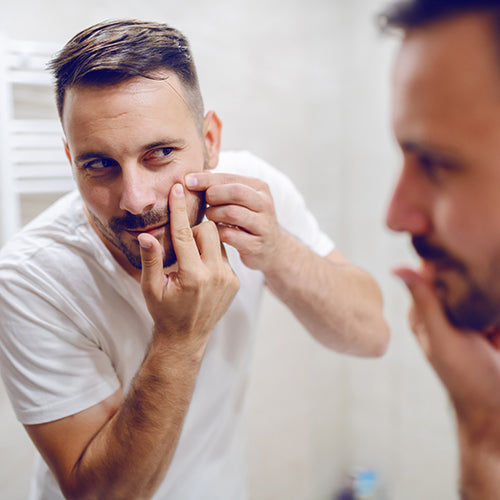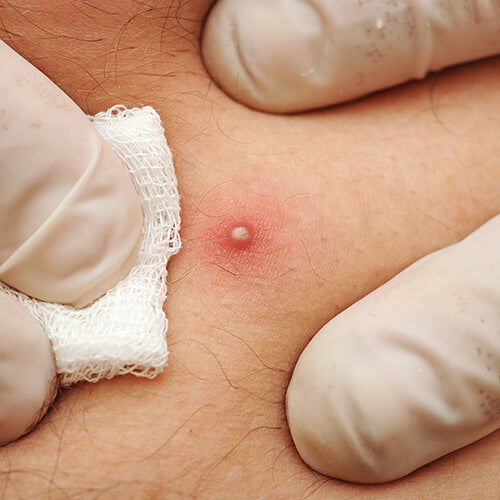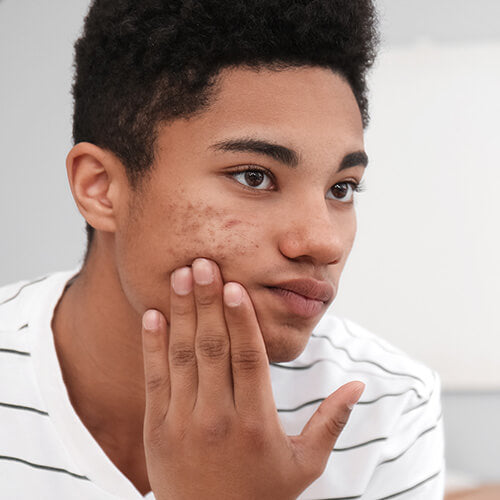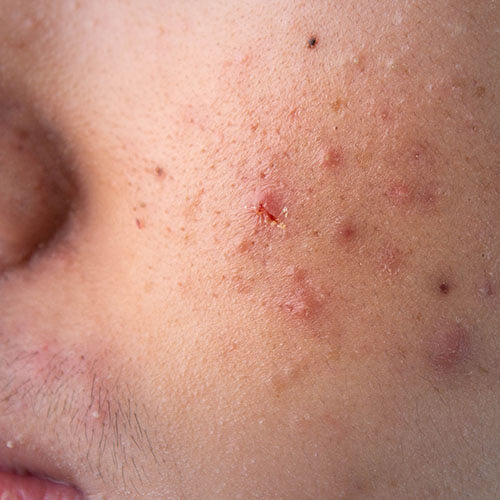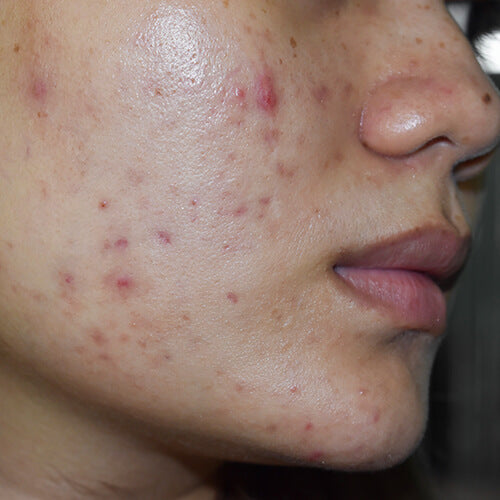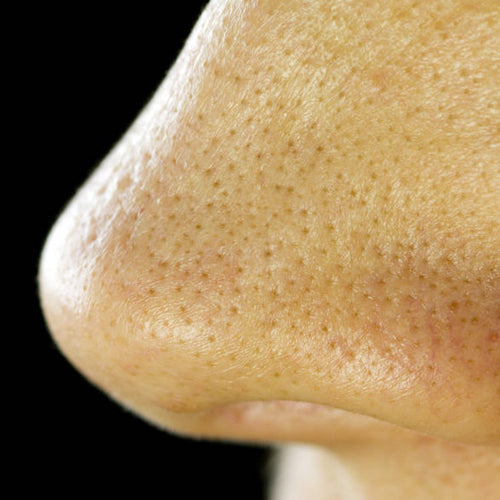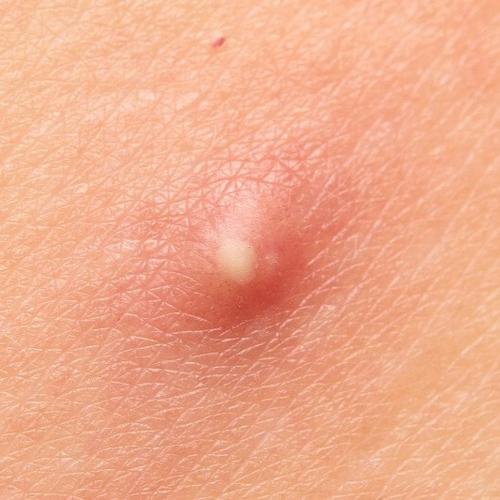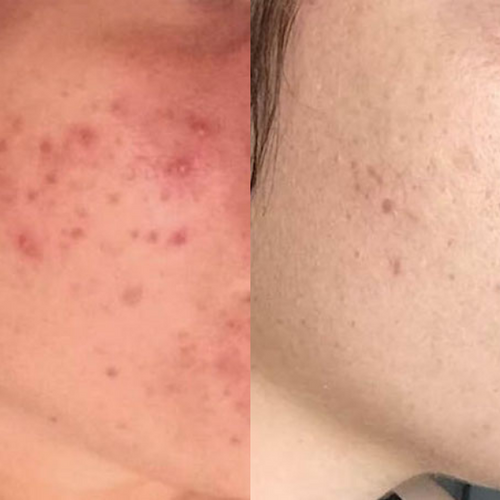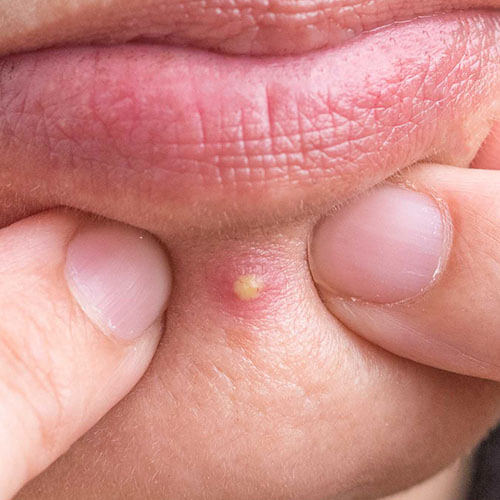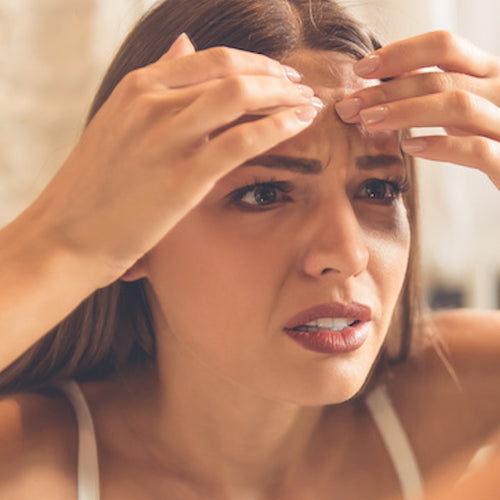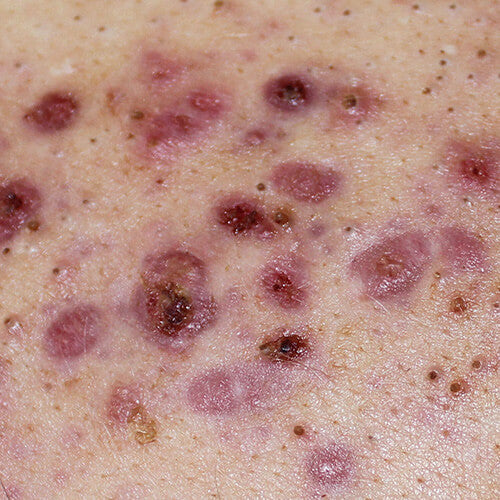
Could You Have a Rare Form of Acne?
Beyond acne vulgaris and its common cousin, acne mechanica, there are a handful of other more severe types of acne out there. With the help of Dr. Pimple Popper, we break down a few of the rare forms of acne, including acne conglobata, acne fulminans, and acne inversa: how to recognize them, and what to do about them.
Published:
5 minute read
If you’ve got skin — and you’ve already hit your tween years — chances are you’re familiar with acne vulgaris. It’s the most common skin condition in the world, affecting upwards of eighty percent of the population. Most frequently referred to as simply “acne,” this is the collection of blackheads, whiteheads, and inflammatory lesions that most of us recognize as typical pimples.
But beyond acne vulgaris and its common cousin, acne mechanica, there are a handful of other more severe types of acne out there. Here, we break down a few of the rare forms of acne: how to recognize them, what causes them, and what to do about them.
Article Quick Links
Could you have a rare form of acne?
Before we delve into the details of the more unusual forms of acne, let’s review the typical characteristics of acne vulgaris. This most typically strikes during the teen years, when androgen hormones surge, stimulating the sebaceous glands to secrete more oil. Depending on your unique chemical makeup (your physiology) and your microbiome (the little organisms like C. acnes bacteria living on and in your skin) you might experience different types of breakouts:
- Non-inflammatory: blackheads and whiteheads that form when pores (i.e. skin openings containing pilosebaceous units) become clogged with excess sebum and dead skin.
- Inflammatory: clogged pores (aka comedones) that trigger an immune response resulting in papules, pustules, nodules and cysts.
Increasingly, adult men and women alike are experiencing acne well beyond their teen years. For women, this commonly takes the form of hormonal acne, related to monthly cycles and perimenopause/menopause. Adult acne can also be related to lifestyle (like stress and obesity), or an underlying medical condition (like drug side effects or hormonal disorders).
When should you see a dermatologist for your acne?
We’ve covered this one before, but in a nutshell: if your acne isn’t responding to a dermatological skincare regimen within a couple of months, it’s time to get it checked out. If you’re using ingredients like salicylic acid, benzoyl peroxide and retinol consistently and not seeing any improvement, this could be a sign of something else going on.
If you are concerned about scarring, or you suspect you might have an undiagnosed illness, it's best to consult with a dermatologist right away.
Rare forms of acne are often connected to chronic medical conditions, including some autoimmune disorders. These types of acne lesions are often unresponsive to conventional over-the-counter and even prescription acne treatments.
What medical conditions are associated with severe acne?
In the last half-century, an increasing number of chronic conditions causing multiple organ system dysfunctions have been described. Research has revealed genetic mutations that indicate these disorders are inherited, though their origins in some cases are still not well understood.
These acne-related autoimmune conditions include:
- SAPHO: synovitis, acne, pustulosis, hyperostosis, and osteitis syndrome. A group of inflammatory bone disorders that have been associated with severe acne.
- PAPA: pyogenic arthritis, pyoderma gangrenosum, and acne syndrome. Primarily a type of inherited arthritis that may present with ulcers and severe nodular acne.
- PASH: pyoderma gangrenosum, acne, and hidradenitis suppurativa syndrome. An autoinflammatory disease affecting only the skin, characterized by ulcers, abcesses and cysts.
- PAPASH: pyogenic arthritis, pyoderma gangrenosum, acne, and hidradenitis suppurativa syndrome. A combination of PAPA and PASH.
What are the rare forms of acne?
Some of the most severe types of acne are associated with the autoimmune conditions we detailed above, while some are unrelated. Although considered quite rare, here are three that definitely require a visit to the dermatologist.

Acne conglobata
This extreme form of acne is believed to be caused by a hyperactive immune response to C. acnes bacteria. It’s characterized by both comedones (blackheads in groups of two or three), along with deep, burrowing abscesses (aka draining sinuses) that ooze a foul-smelling discharge and almost always result in scarring.
Acne fulminans
Also known as acne maligna, this severe type of acne is very rare (less than 200 known cases), but is often associated with the autoimmune conditions we noted above. It presents with painful, bleeding ulcer-like lesions, but can be distinguished from acne conglobata by the absence of comedones. Patients may also experience fever and joint pain.
Acne inversa
More commonly referred to as hidradenitis suppurativa, this is a chronic inflammatory skin condition thought to involve the apocrine glands. It’s characterized by recurrent abscesses and boil-like nodules that ooze an odor-producing discharge and tend to scar.
How can you tell if you have a rare form of acne?
If you’re experiencing frequent breakouts, don’t panic. Chances are, it’s the common — and readily manageable — acne vulgaris. Dr. Sandra Lee (aka Dr. Pimple Popper) advises patients to start consistently using an acne regimen like SLMD Acne System or Body Acne System.
Here are her top signs that you need to see a dermatologist to rule out something more serious:
- You don’t see noticeable results within three months
- Your acne is starting to scar
- You’re experiencing other symptoms like fever, joint pain, excessive body hair or anything unusual
- You’ve been taking medication/drugs known to cause acne, or you’ve been exposed to industrial chemicals
- Acne-related autoimmune disorders run in your family
If you can’t get into your dermatologist right away, start with your general practitioner instead.
Dr. Lee’s last word
While acne is by far the most common skin condition in the world, it’s not typically a serious medical condition. On relatively rare occasions, however, we dermatologists see acne that’s associated with underlying medical conditions. It’s best to talk to your dermatologist if your acne isn’t responding well to an over-the-counter regimen, to help avoid scarring and to rule out other causes.
—Dr. Sandra Lee




